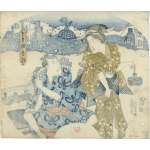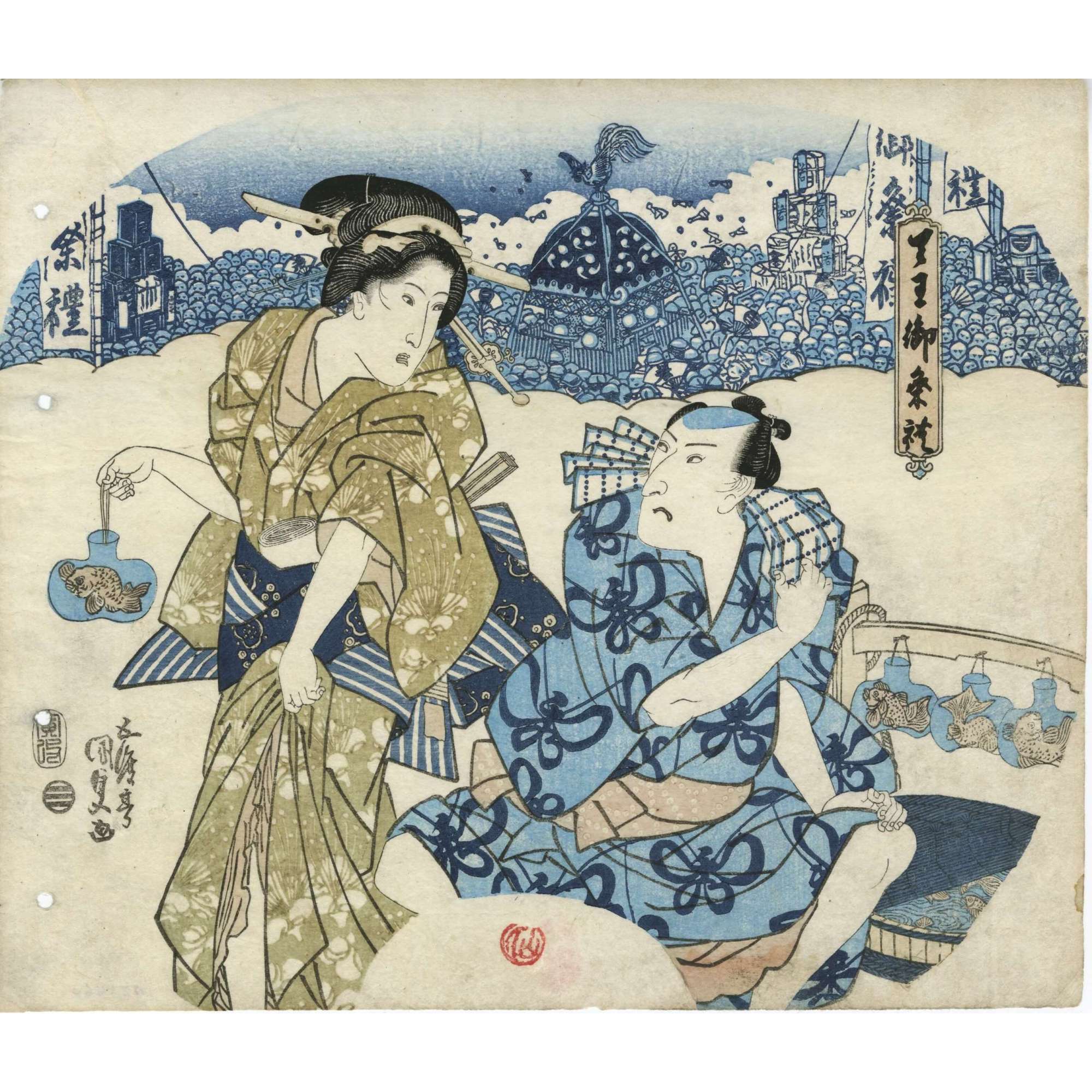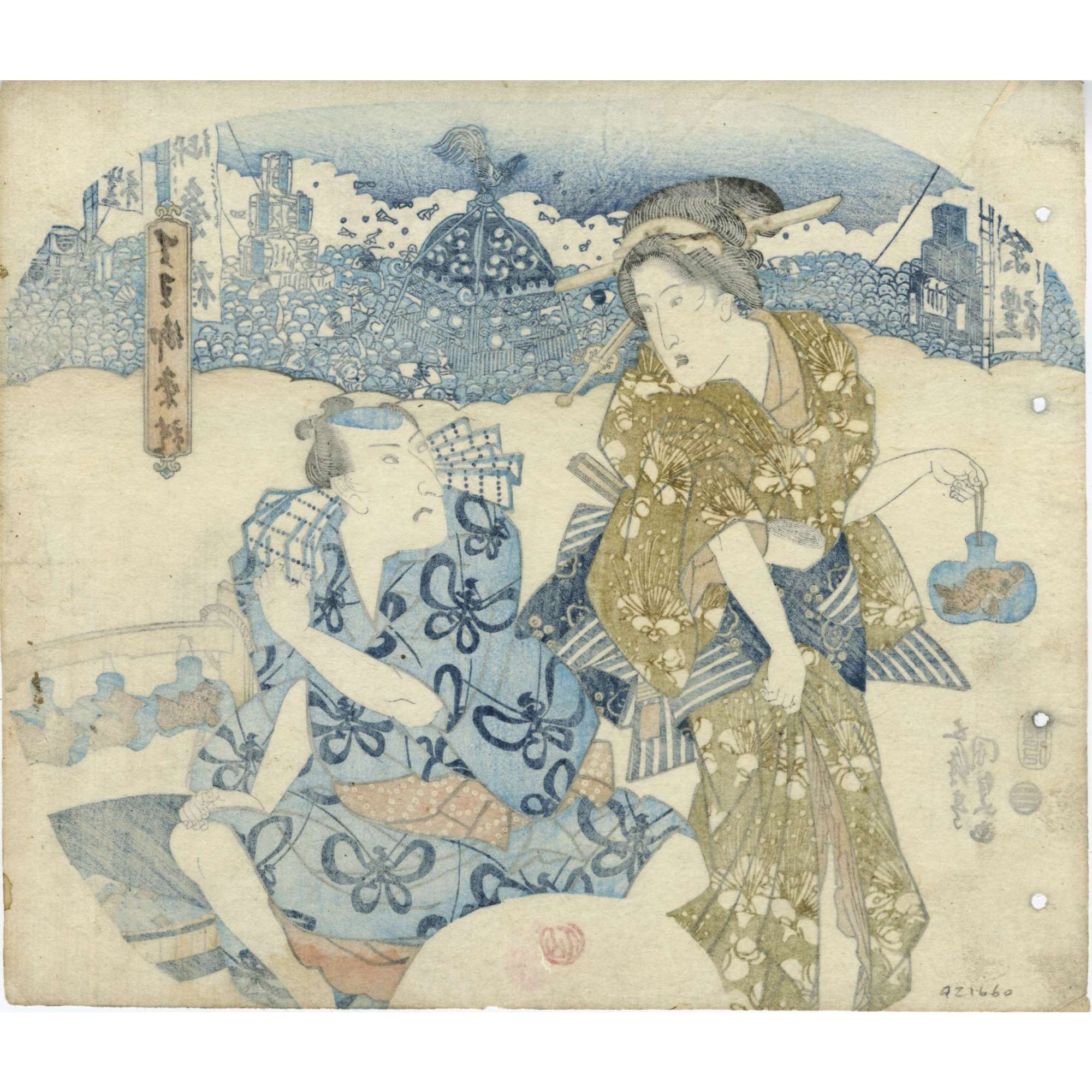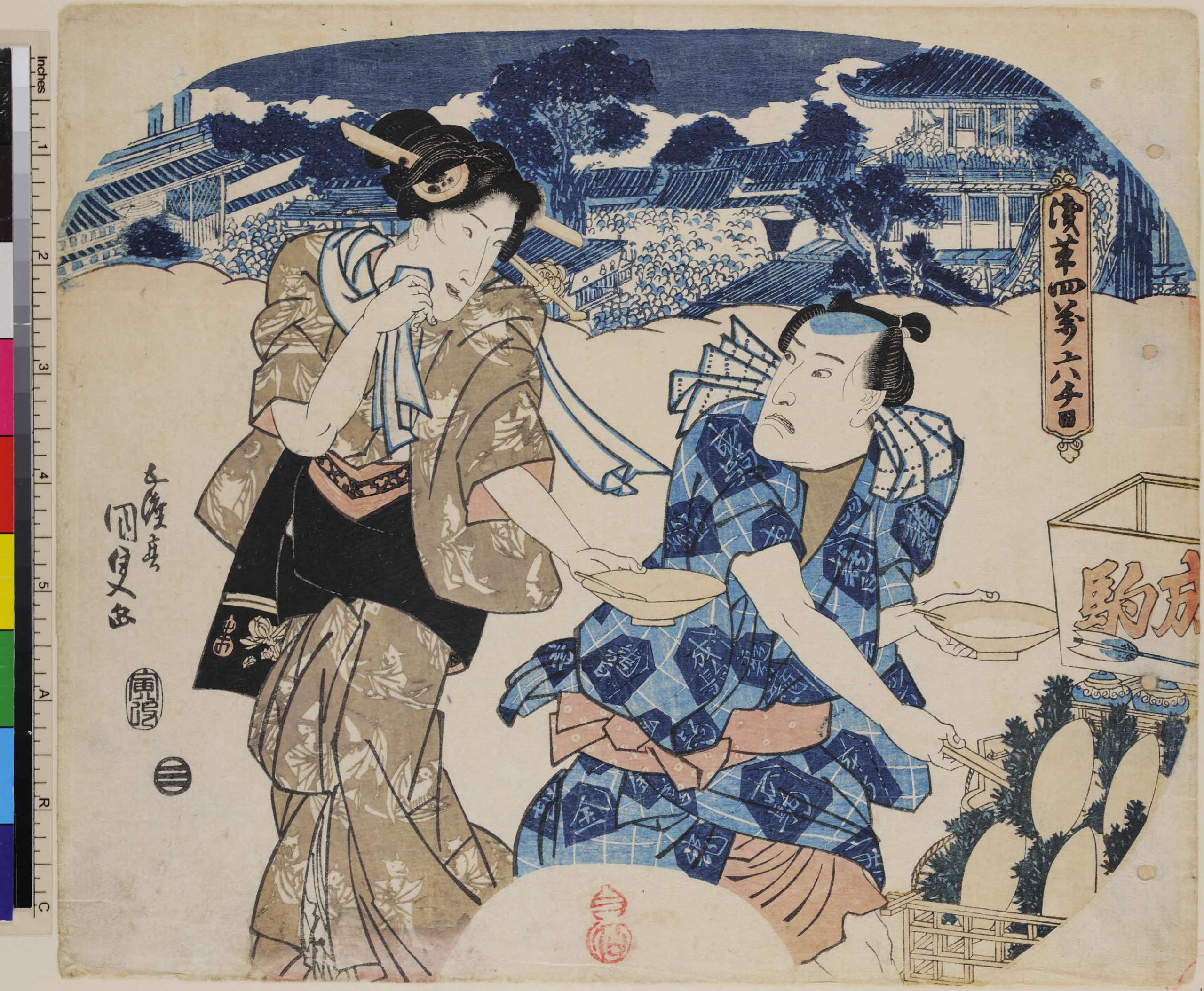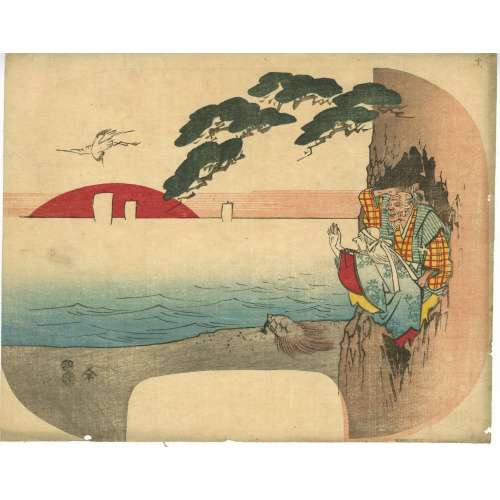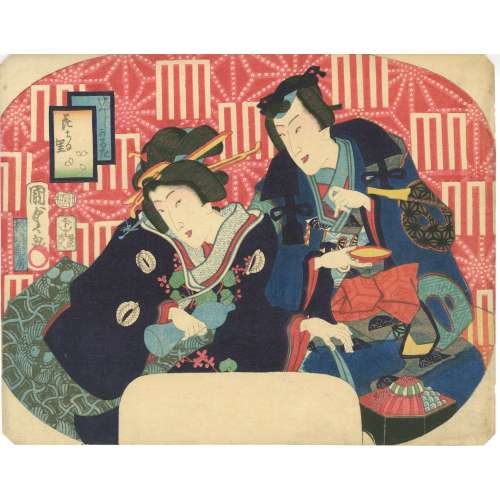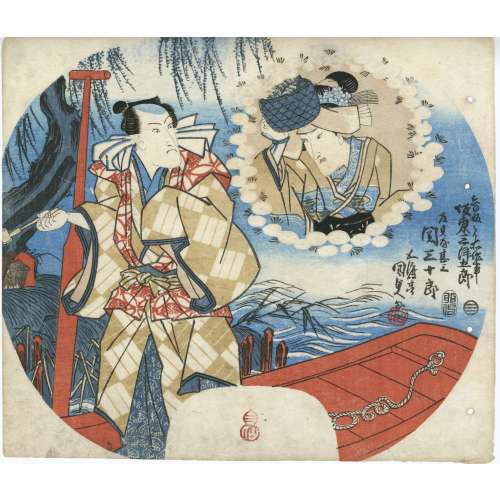Artist: Utagawa Kunisada [歌川 国貞], a.k.a. Utagawa Toyokuni III [三代歌川豊国] (Japanese, 1786–1865).
Signed: 五渡亭国貞画 (Gototei Kunisada ga).
Publisher: Ibaya Senzaburō [伊場屋仙三郎] (Japanese, fl. c. 1820–1850).
Date-Aratame Seal: 寅改, Tora-aratame, Tenpō 1 (1830).
Media: Aiban yoko-e uchiwa-e (団扇絵), color woodblock print, 229 × 266 mm.
Actors and Roles:
- Bandō Minosuke II [坂東蓑助] (Japanese, 1802–1863); other names: Morita Kan’ya XI, Bandō Mitsugorō IV.
- Depicted as a goldfish vendor (kingyo-uri, 金魚売).
- Iwai Kumesaburō II (二代目 岩井 粂三郎) (Japanese, 1799–1836); other names: Iwai Hanshirō VI, Iwai Hisajirō I, Baiga (poetry name), Shūka (poetry name).
- Depicted as a geisha.
Full-length view of Iwai Kumesaburō II as a geisha, standing and holding a glass container with a goldfish. She wears an olive kimono decorated with white plum blossoms and a blue obi. She carries a folding fan (扇子, sensu) in the back and hygienic tissues (御髪紙, onkotogami) in the front, reinforcing her identity. Her companion, Bandō Minosuke II, a goldfish vendor, sits nearby, adjusting a towel on his shoulder, wearing a blue kimono with stylized butterflies.
In the background is a festival procession with a large float (dashi, 山車), a rooster on top, a crowd, and banners. The inscription 天王御祭礼 (Ten’ō Go-sairei) confirms that this scene takes place during the Ten’ō Festival, an important Edo-period event in Nihonbashi Kobuna-chō, associated with Gozu Tennō (牛頭天王), a deity protecting against plagues.
This print is an example of benigerai-e (紅嫌絵, “red-avoiding pictures”), characterized by the absence of red pigments and the use of Prussian blue and olive tones. Produced in Tenpō 1 (1830), this colour scheme reflects a stylistic trend in early 19th-century ukiyo-e. However, in this case, the absence of red may be due to deliberate artistic choice or the natural fading of red pigments over time.
A closely related print from the same festival-themed series depicts a nearly identical composition featuring different actors and a different festival. Title: “Asakusa Shimanrokusennichi” (浅草四万六千日). Festival: Sanja Festival at Sensō-ji (associated with the hōzuki market). Actors: Nakamura Shikan II as a water vendor (mizuu-uri) and Segawa Kikunojō V in a role similar to the geisha in our print.
While not depicting actual kabuki performances, these prints serve as actor-centric promotional works, using seasonal festivals as a recognizable and engaging backdrop for Edo audiences. They share a common design structure, suggesting they were created using a standardized template, with variations in actors, festivals, and small details. This approach allowed Kunisada to efficiently produce multiple fan prints, catering to kabuki enthusiasts who collected actor portraits. These prints exhibit characteristics of mitate-e (見立絵), where actors are placed in imagined or symbolic settings unrelated to specific stage roles, further emphasizing their public personas rather than any particular performance.



